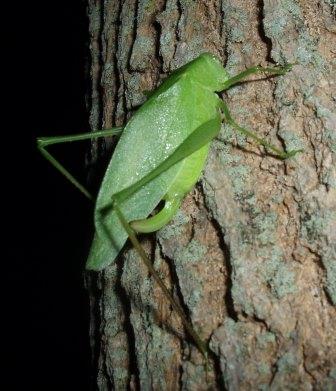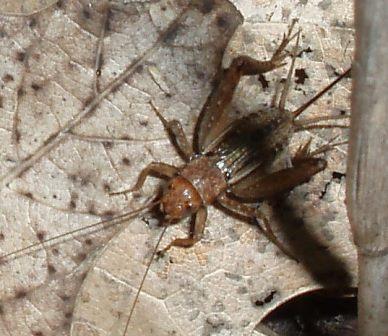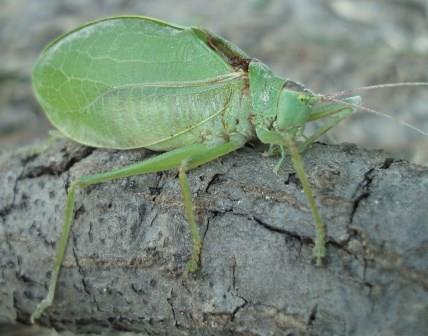by Carl Strang
As another season of field research into the region’s singing insects winds down, I am starting to look back at the highlights. Some of these were chance encounters that provided new photo opportunities. For example, there was a weakened common true katydid I found on a trail at Waterfall Glen in broad daylight. I didn’t have a good photo of the species, and posed him after removing him from the hazardous trail.
Another species for which I want a better photo is the handsome trig. Some were singing on a cloudy day down in Fulton County, Indiana, and one came out in the open, but the low light resulted in a less than sharp image.
The Indiana Dunes area provided several photographs.

This oblong-winged katydid female was emitting single clicks in response to the more complex songs of nearby males.
A four-spotted tree cricket had escaped from my grasp before I could photograph it. While looking for it on the ground where it seemed to have gone, my headlamp revealed something better.

A female tinkling ground cricket, only the second member of the species I have seen (despite hearing hundreds).
A similar encounter came when I was trying to get a better photo of a melodious ground cricket at Indiana Dunes State Park. Digging through the leaf litter in the area from which a male’s song seemed to be coming, I turned up a female ground cricket.

When I examined the photos, though, I saw that the palps were white. This was a female confused ground cricket, another species that was singing in the area, and the first female confused I have seen.
One of the last places I visited this year was the Bong Recreation Area in Kenosha County, Wisconsin. The prairie area there is extensive, and has a good population of common meadow katydids.

Despite its name, the common meadow katydid is much less frequently encountered than two of its congeners, the gladiator and black-legged meadow katydids.

There were a few broad-winged bush katydids in the prairie, but I wasn’t successful in stalking one. This Texas bush katydid had to substitute.
Such encounters, sprinkled through the field season, make for good memories.








